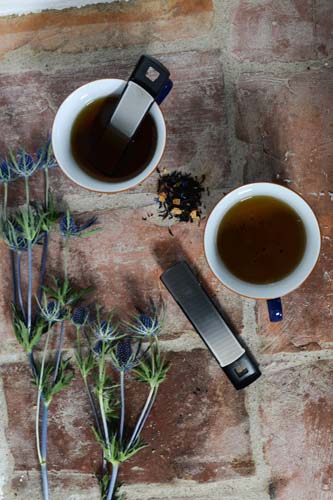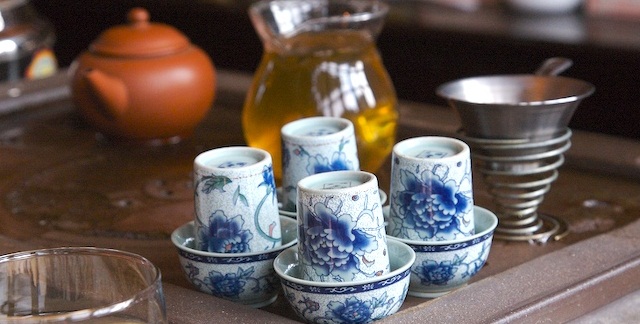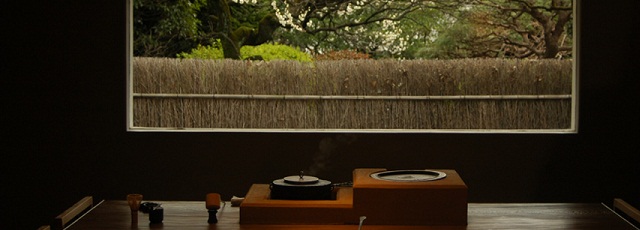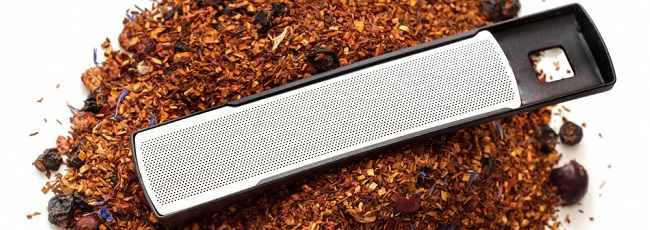“A cup of tea would restore my normality.”
[Hitchhiker’s Guide to the Galaxy, Screenplay]”
― Douglas Adams
Tea is one of those simple, everyday pleasures that can make your day better with just a tiny sip and a fast sniff of the steamy cup in the mornings. This versatile beverage has the ability to warm you up on a cold day or give you a boost of freshness in a hot one when it’s topped with some ice and sugar. It is a proven health remedy and is often used to supply natural antioxidants and vitamins or like a substitute for coffee in some cases (like the mate in Argentina).
Tea ceremonies are a major part of the Asian culture and it is translated as a “way of tea” in Japanese or “art of tea” in Chinese. There is a special term – teaism, which means exercising a tea ceremony with harmony, clear mind and enlightenment. Even though not every culture around the world invests so much thought and tradition into drinking tea, it is undeniable that this simple act has a very social and cultural element to it for many nations.
- THE UNITED KINGDOM
When we speak of tea, we inevitably think of the Brits and their long-lasting tradition of an afternoon spent drinking this tasty, herbal infusion. Ever since the 18-th century, England had been one of the world’s biggest tea consumers.

The Drosselmeyer Tea Infuser. Visit our Shop
Usually, the inhabitants of Great Britain prefer to sip their tea with a dash of milk, but it is not uncommon to take it black or with lemon and sugar. The preparing of the tea itself starts with bringing the kettle to a boil. Then water is added to a teapot where there are already either loose leaves or a tea bag. They are left to brew together between 2- 5 minutes. The infusion is poured into a mug through a tea strainer. There are numerous traditions involved with the steamy drink when it comes to the English nation and there is even an official law that allows a minimum of a 20-minute break called “tea or lunch break” to a 6 hours’ work shift.
Anna Russel, Duchess of Bedford is credited with creating the afternoon tea tradition in 1840. Since at that time dinner was served around 8 p.m. she came up with the idea of a tea break and snacks, which stuck up to this day. The afternoon tea – usually served between 3.30pm – 6pm had suddenly turned into a social event. During the Victorian era “the high- tea” was a way to show one’s class and status by using the right utensils and manners.
- TIBET
Butter tea – doesn’t it sound simply scrumptious? This unique take on the hot drink is a grand part of the Tibetan lifestyle and is always served to guests. The ceremony of consuming butter tea, states that it must be drunk in sips and is refilled by the host every time someone takes one. In case the guest prefers not to drink the infusion, he is simply not to touch the bowl. This tasty drink takes a lot of time to prepare. It starts with boiling water and tea leaves for half a day. After that, the liquid is skimmed and added to a cylinder containing yak butter and salt. The goal is to achieve a stew-like consistency by shaking it.
- RUSSIA
It would not be a stretch if we say that for the Russians – tea is considered something like the national non-alcoholic beverage since they like to consume it after every meal and at any time of the day. Tea is a big part of Russian culture ever since in 1638, a Mongolian ruler presented the Tsar with four pots of tea.
The most known variety of tea in Russia is the black tea. First, a strong concentrate is prepared called zavarka (Russian: заварка) in a little metal teapot known as samovar (Russian: самовар). The zavarka is made of loose – leaf tea. When the concentrate is poured into a cup, more hot water could be added and it is topped with sugar, honey, jam or lemon depending on the taste. An addition of cookies or crackers is a must-have to the tradition of drinking tea in Russia.
- CHINA
The intricate and enchanting tradition of making a tea called kung fu tea ceremony is a well-known part of the Chinese culture. The extreme details involved in the process, make the simple task of brewing tea into something really impressive.
The ceremony should be done in a specific place in a peaceful and calm space. The preparations start with warming the pot and the cups. Guests are also invited to inhale and appreciate the smell of the tea leaves. After the rinsed leaves are put inside the pot, hot water is added, pouring it from some high above the pot.
When the first brew is done, it is poured into a cup but is not to be drunk. The pot is then refilled with hot water. The aroma must be enjoyed as much as the taste, so appreciating the scent of the hot steam coming from a cup of tea is just as important as sipping the delicious liquid. At the end of the ceremony, used leaves are left in a separate bowl in order for the guest to appreciate the used herbs. Everything is concluded with a process of cleaning and air- drying the utensils.
- MOROCCO
The tasty, sweet infusion of spearmint tea and sugar called Maghrebi mint tea is a well – known blend in the Greater Maghreb region. This refreshing drink undisputable takes a role in the local social life and is often provided on the table for guests in order to show hospitality. Usually prepared by the man of the house at least three glasses of this tea should be served and don’t think of refusing since it is considered being impolite to do so.
It is made by mixing green tea, fresh mint leaves, sugar and boiling water. The concentrate is poured from a high in order to swirl the tea leaves and extract the flavor.
- INDIA
For centuries India’s population have been using tea made by herbs like cardamom, pepper, basil, and mint in their everyday life to cure maladies, making this healthy infusion an important part of their culture. India is the place where the trendy now a day’s drink called chai was created in order to disguise the medicinal additives in the brew with a sweet and milky taste. Masala chai is prepared from black tea and mixtures like Karha made from ginger and green cardamom. Other ingredients include nutmeg, mace, chili, coriander, rose flavoring and licorice.
It is an Indian tradition to offer “Chai- Pani” to the guest, which means tea and water. In India, the tea leaves are not prepared separately and they are not being steeped. They are prepared with additions and are boiled a second time when milk and sugar are added. Sometimes, the leaves are boiled only in milk, making the brew extra special.
Today India is one of the largest tea – suppliers, right after China. Worldwide known teas like Assam and Darjeeling are grown exclusively in India.
- ARGENTINA
Argentina is a country known for its tisane or herbal tea called mate – a drink made from the leaves of the yerba maté plant. The drink is served with a gourd and a metal straw called bombilla is used to sip it. This way of drinking the tisane comes from Guarani – a native culture in South America. As it is common in most of the places around the world, there is a ritual in drinking the mate. The water should be slowly poured inside the gourd. It is then passed clockwise. The gourd must be drunk fully each time.
The mate is known to have cholesterol-lowering qualities, contains vitamins and is a natural antioxidant. The positive effects on the health the mate had, plus the fact it is high in caffeine made it popular and well-known beverage.
- PAKISTAN
Chai is the most commonly reached for beverage in the Pakistani cuisine and lifestyle. Pakistan is the third largest importer of tea in the world, though they do produce a tea native to their region called Chinkiari. Tea is a preferred accompaniment to breakfast, lunch, and dinner when it is consumed with a sweet treat like biscuits and paan. The tea in Pakistan is usually prepared from loose leaves and is steeped before it is served.
Sheer chai also called Noon chai is a traditional tisane from the South Asia, more specifically Kashmir. This unique drink has a pink color and is made from pistachios and cardamom and is reserved for special occasions.
- JAPAN
In Japan, the tea ceremony is called Way of Tea and it the process of preparing powdered green tea called Matcha. The Japanese name of the ceremony is chanoyu while the process itself is temae. This intricate process of tea- making is widely inspired by the Zen Buddhism. It is considered that tea first reached Japan through a monk – Eichū that brought it from China in the 9-th century, introducing it to Emperor Saga.
The process of preparing the tea is not so much for the drinking the brew itself, but more for doing it in a harmonies and beautiful way. It is about honoring the guests that are a most important part in the tea ceremony. Every movement and gesture is carefully calculated. Every object and the way it is used have a meaning.
There are many tools used in the ceremony – the tea bowl (that can change depending on the season), the natsume (tea caddy) that is used to store tea and a tea whisk are the most important ones. After cleaning the utensils, the host prepares a thick tea called koicha. The bowl is given to the guests to take a sip, each after the other, but not before whipping the bowl before passing it to the next person. At the end – the bowl is returned to the host. He can now make another dose, after cleaning the utensils again. The second way around the host prepares a thin tea called usucha, this time for each guest individually.
- TAIWAN
In Taiwan it is common to intertwine the tea ceremony with arts like calligraphy, flower art, and incense art – so it is not a surprise that tea houses are also called “tea-art” shops. For a Taiwanese families it is important to own a teaware that is neatly kept and carefully looked after. “Raising the pot” is a tradition in every home. Since most of the teapots are made of clay, after a while the pot becomes brighter – this is where the name of this tradition comes from.
Taiwan is also the home of the Bubble tea – an oolong, black or green – based tea with milk, sugar and tapioca bubbles.
Image Copyright: David Leeming, License: CC BY 2.0



